Discolored 2 review
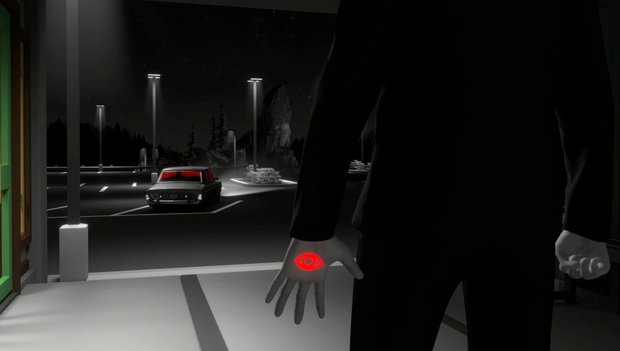
- 0 Comments
A worthy sequel to the surreal 2019 puzzler, even improved with (slightly) more narrative to make the ambiguity more palatable
Back in 2020 I played Discolored, a puzzle-adventure game based on the concept of restoring colour to a grey world. It felt very appropriate in that particular year, and I came away having enjoyed the experience. Yet at the same time, I was left completely confused by it. But in a good way. Maybe that’s the reason I loved it? Now the sequel is here, sharing much in common with its predecessor. Discolored 2 has a similar premise, look and focus on puzzles, and is just as confusing as last time. Having said that, there are some definite improvements over the first game, and I enjoyed this one even more than the original.
Discolored dropped players into a lonely, desaturated world without much explanation. The plot wasn’t exactly front and centre, but it created a strange and intriguing space to explore. You don’t have to have played the original to enjoy Discolored 2, but the sequel picks up right where that game left off, only this time the stakes are a bit more defined. It’s still weird. It’s still mysterious. But a little additional context makes it feel more fully rounded and a lot less random.
The story still leans heavily into ambiguity, though. You aren’t spoon-fed answers or solutions; instead you’re left to interpret what’s happening. There’s just enough to give you purpose, but a lot is left for you to piece together on your own. Most of the narrative details are given in the introduction, where a brief summary explaining the missing colours is revealed, and how it caused even the people themselves to begin losing their colour and become obsessed with draining the world of its hues. You soon discover that a group of detectives, scientists, and inventors (whom you work for) have come together to investigate the phenomenon, ultimately tracing it to a mysterious organisation using their power to control the world. It’s your job to reverse the process where you can, though of course you must beware others who are out to stop you.
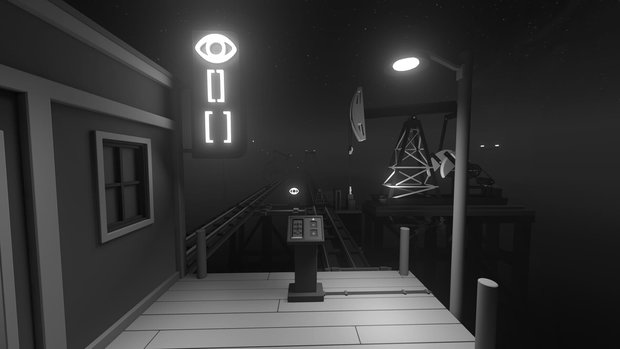
The environments aren’t always logically coherent either, nor the way they are connected, but that surreal sense of detachment is part of the game’s charm. The places you visit are made up of disparate, dreamlike locations, including lab corridors, observation rooms, and quiet sitting rooms, each feeling like a small, self-contained puzzle box waiting to be solved.
This abstract approach fits the mood but may frustrate players who want a clearer through line. It also makes describing the story difficult, right from the very first scene. The game starts with you standing in your office, noticing that one of the pictures hanging on the wall isn’t quite what it seems. Connected to the picture is a power box, your first puzzle, and by repairing it you’ll eventually be able to use the picture to transport to another place. (There are other effects of your repair as well, which I don’t want to spoil.) Doesn’t make sense? That’s what Discolored 2 is like. I can concoct a narrative in my mind as to how I transported and why, but you’ll probably come up with a different reason.
While much is left open to player interpretation, there are a few revealing moments that progress the story. An early example is your first interaction with a lady dressed in red, whom you see stepping into an elevator down a hallway as you turn the corner. You start to chase her (in a small cutscene you don’t have any control over), but she activates the elevator and you miss your chance. Another cutscene shows her investigating a mysterious artifact, but again, you don’t even really find out what that artifact is or why it should matter to you. But, without having to use words, it’s obvious that she is someone that you want to track down. There is also a man in a bowler hat, whom the introduction makes clear is working for the bad guys, and at times he will chase or attack you. On one occasion he even locks you up, from which you have to escape.
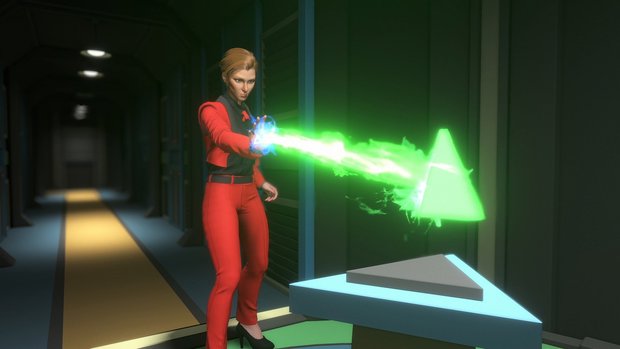
Unfortunately, the game’s open-endedness does result in the pacing having its rough spots. The middle portion finds a nice rhythm, with puzzles flowing naturally and discoveries leading smoothly into one another. But toward the end, that momentum slips as the puzzles start to blur together and their variety drops. Then the game wraps up very suddenly. The abrupt final act leaves the impression that things were finally building toward something more meaningful than what you actually get. It’s not unsatisfying, exactly; it just feels like the strong middle section never quite gets a proper conclusion.
But Discolored 2 is less about the story and more a puzzle game anyway, separated by some exploration and some moments of conflict. The central mechanic – restoring colour to a grey world – is a brilliant idea that still feels fresh a second time around. Each puzzle you encounter typically revolves around using coloured prisms or a special camera to manipulate the environment, which often results in bringing hidden things into view, powering machines, or unlocking doors. The mechanic is intuitive and satisfying, and the way colour changes the world remains one of the game’s most rewarding features.
Early on, the puzzles strike a nice balance between challenge and logic. You’ll experiment, observe, and gradually piece things together, often with that rewarding “aha!” moment when everything clicks into place. Some puzzles are mechanical, such as rerouting pipes, solving laser grids, or opening access panels, while others are based more on environmental awareness. One I particularly enjoyed was a chess game where I had to reconnect wires on a nearby panel to reveal pieces. It wasn’t too difficult, and though it seemed a bit out of place (not an important consideration in such a surreal game), it was a nice change of pace and was reasonably challenging without being frustrating.
As the game goes on, the puzzles start to wear a bit thin because the formula begins to feel similar. However, Discolored 2 does introduce a new idea that goes beyond traditional logic puzzles, in the form of what it calls “concepts,” which must be combined to achieve tangible solutions. For example, to create a screwdriver, you’ll first need to acquire a concept of the tool, stored in your inventory as an icon, as well as another concept of matter to give it physical form in a kind of 3D digital printer. It’s lateral thinking rather than traditional logic, and it is sometimes very surreal and doesn’t always make sense on the surface, but when a strange solution finally clicks, it can be surprisingly satisfying.
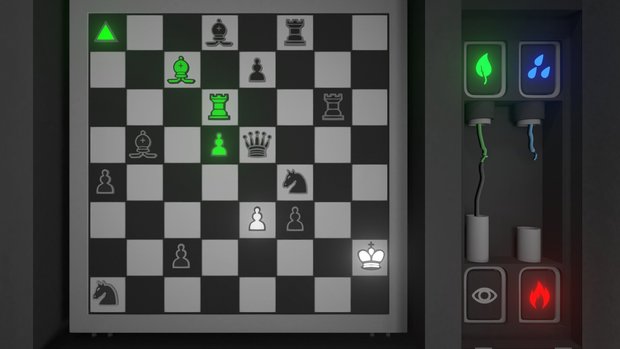
Helpfully, there is a built-in hint system to assist you if you get stuck, but it’s a little inconsistent. It operates on a timer, giving you another clue only after the timer has expired, but it doesn’t always point you in the right direction when it matters most. There are sometimes consequences for failure, too, as unlike in the first game, you can die in the sequel, usually as a result of a failed puzzle or not escaping someone who is pursuing you. If you’d rather do without that stress, the inclusion of a safe mode (selectable when you start the game) allows you to opt out of chase sequences or moments of danger without missing the rest of the experience.
Discolored 2 keeps things simple when it comes to interface and controls, which is exactly what a game like this needs. There’s no HUD to clutter the screen or distract from the experience, movement is smooth and intuitive, and interacting with objects in the environment feels natural. Navigation is accomplished with the standard WASD keys, with hotkeys for opening your inventory or the hint screen. With the mouse you pan the camera around; left clicking on objects will interact with them when you’re close enough, and right clicking is generally used for closing the inventory or puzzle close-ups. I did find a couple of instances where elements that should have been interactive didn’t respond at all, unfortunately, requiring a restart of the game. These hiccups briefly broke my immersion, but thankfully they’re the exception rather than the rule, and the game allows for manual saves you can reload, as well as autosaves at different checkpoints.
As a puzzle game primarily, it’s not surprising that Discolored 2 contains only a few characters. If you're looking for detailed arcs or rich backstories, you won’t find them here, but if you appreciate supporting characters as mood-setters in a larger abstract world, they do just enough to leave an impression. The most memorable is the woman in red, a mysterious figure who seems to guide you or at least oppose the forces working against you. Like with most things in this game, she is given little dialogue or backstory, but her presence alone creates a feeling of significance. And in a game all about restoring colour, her bold red outfit really stands out and immediately draws attention.

The other main character is a grey-suited figure in a bowler hat who appears at key moments to block your progress, throw fireballs, or simply creep you out. More of a looming threat than a fleshed-out villain, he’s a member of the organisation draining the world of its colour, but his role too is left deliberately vague. Neither character appears often or for long, but this works well within the game’s surreal framework and manages to reinforce its themes of oppression, resistance, and ambiguity.
Graphically, Discolored 2 is one of those games where simplicity achieves more than realistic detail ever could. You freely walk through this 3D world in first-person view, soaking in its 1950s sci-fi vibe. The artwork has clean lines and every environment feels carefully designed, even when it leans into surrealism. One of early areas is a complex of rooms, halls and staircases that leads to a small outdoor industrial area. Each room has seemingly normal things like chairs and tables, but there are also trapdoors that need to be opened, leading to other areas like attics and basements that are full of old computers and other similarly now-outdated technologies.
While at first glance there’s nothing spectacular about this 3D world, where it shines is by beginning in grey and then gradually coming to life as you reintroduce colour. It’s not only rewarding in gameplay terms but also emotionally impactful. Watching a cold, lifeless environment shift into something vibrant is progress you can tangibly see and feel, and it adds a subtle narrative weight to each puzzle you solve.
If the visuals in Discolored 2 set the tone, the audio completes the mood. The soundtrack is sparse, ambient, and deeply atmospheric, feeling more like unsettling chords than traditional melodies. It’s not music that demands your attention, but it creeps in under your skin, creating a constant sense of tension and unease. Whether you’re walking down a shadowy hallway or trying to piece together the next puzzle, the soundscape keeps you a little on edge.
Silence is just as important. Moments of quiet are used to isolate the player, making every sudden sound, from a power-up hum to the approach of a threat, hit harder. Sound effects are clean and deliberate, like the click of a switch or the sharp cue that plays when a puzzle is solved, helping to reinforce the surreal atmosphere and deepen the tension without ever getting in the way. It’s haunting, it’s quietly unsettling, and it’s incredibly effective.
Final Verdict
At around five hours long, Discolored 2 is longer and more developed than its predecessor, offering a more substantial experience. It still leaves much to the imagination, but there is a bit more attention paid to the story now, though this is a game that focusses much more on the how rather than the why. It respects the player’s intelligence and curiosity and provides a decent level of challenges to progress. Even when a puzzle frustrates, you’re never stuck long enough for it to wear you down completely, and the reward for seeing it through is usually satisfying, especially when it results in more colour bursting forth into a previously dreary, monochromatic world. If returning players are hoping for answers they didn’t get the first time around, that’s not going to happen as the sequel is still very abstract. But the pieces provided here work well together to create a whole that is effectively mysterious and, most importantly, fun to play.
Hot take
With its eerie tone, abstract logic, and distinctive aesthetic, Discolored 2 is another atmospherically rich puzzle game that builds meaningfully on the foundation of its predecessor.
Pros
- Visually striking black-and-white artwork enhanced by the restoration of colour
- Soundscape evokes a tense, oppressive atmosphere
- Clever central mechanic still every bit as effective
Cons
- Puzzle formula starts to feel the same after a while, and the logic is a bit too surreal at times
- Abrupt ending disappoints after an excellent build-up
Shawn played Discolored 2 on PC using a review code provided by the game's publisher.


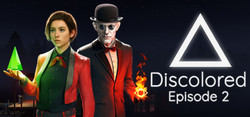


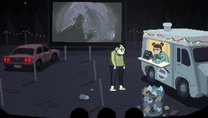
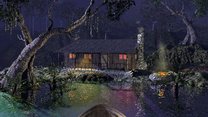
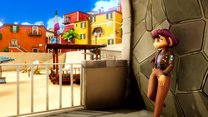

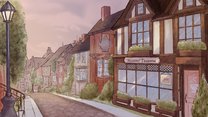

0 Comments
Want to join the discussion? Leave a comment as guest, sign in or register.
Leave a comment